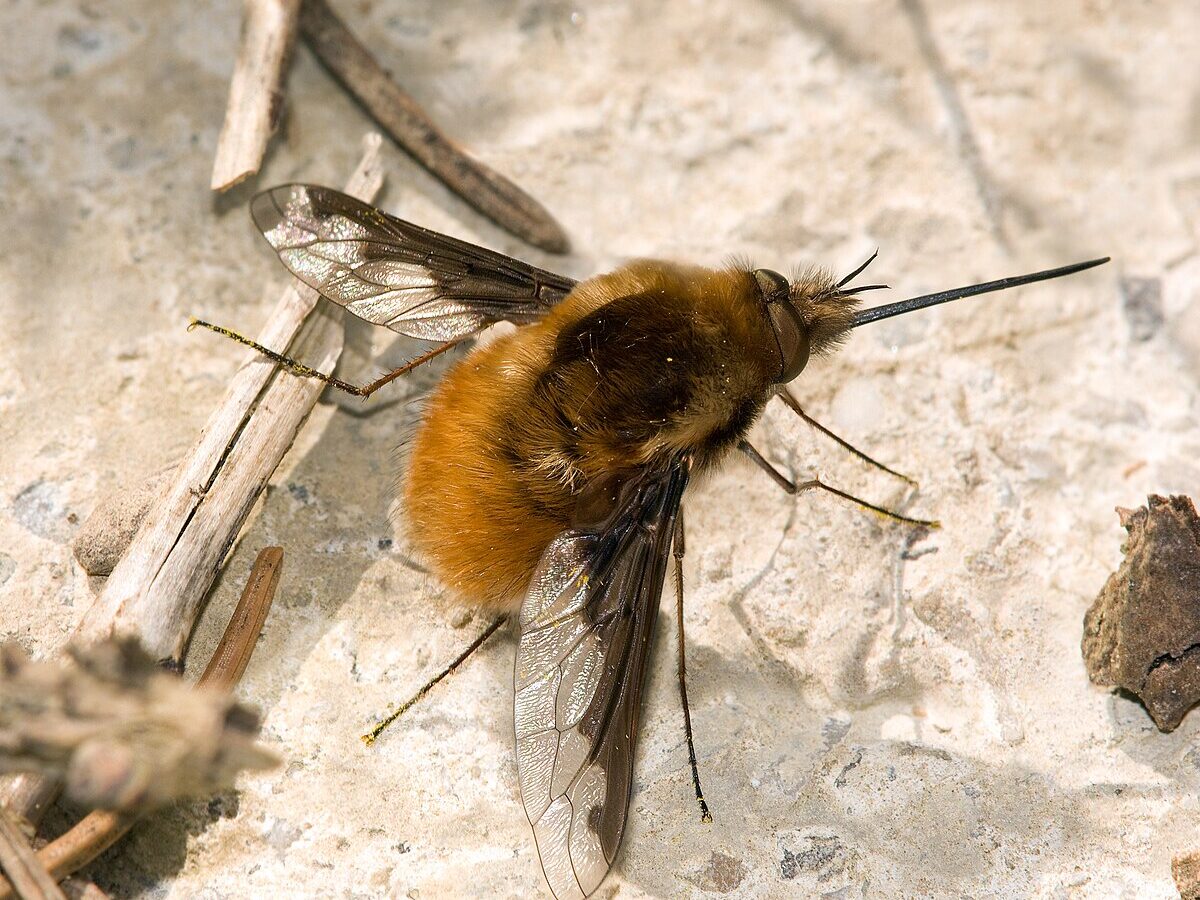
Bombyliidae
Bee flies: masterful mimics and ecological contributors
Overview
The Bombyliidae, commonly known as bee flies, constitute a diverse family of true flies (Diptera) renowned for their bee-like appearance. This mimicry, often a form of Batesian mimicry, serves as a defense mechanism against predators. With over 5,000 described species and many more awaiting classification, bee flies are found worldwide, predominantly in arid and semi-arid regions .(Departamento de Conservação de Missouri, Wikipedia)
Physical Characteristics
Bee flies typically exhibit stout, hairy bodies with coloration ranging from brown to black, often adorned with patterns that enhance their resemblance to bees. Their wings are usually held in a characteristic V-shape when at rest and may display distinctive markings. A notable feature is their long, rigid proboscis, adapted for feeding on nectar from flowers .(Bugs With Mike)
Behavior and Ecology
Adult bee flies are diurnal and are frequently observed hovering near flowers, from which they extract nectar using their elongated proboscis. Their hovering capability and rapid flight patterns make them efficient pollinators. Unlike bees, bee flies do not sting or bite, making them harmless to humans .(Departamento de Conservação de Missouri)
Life Cycle and Parasitism
The larval stage of bee flies is predominantly parasitic. Females lay eggs near the nests of solitary bees or other insects. Upon hatching, the larvae invade the host nest, feeding on the host larvae or stored provisions. This parasitic behavior plays a role in regulating host insect populations .(GenEnt)
Ecological Significance
Bee flies contribute to ecosystems primarily through pollination. Their activity supports the reproduction of various flowering plants, especially in habitats where traditional pollinators are scarce. Additionally, their larval parasitism can influence the population dynamics of other insect species, underscoring their role in maintaining ecological balance .
